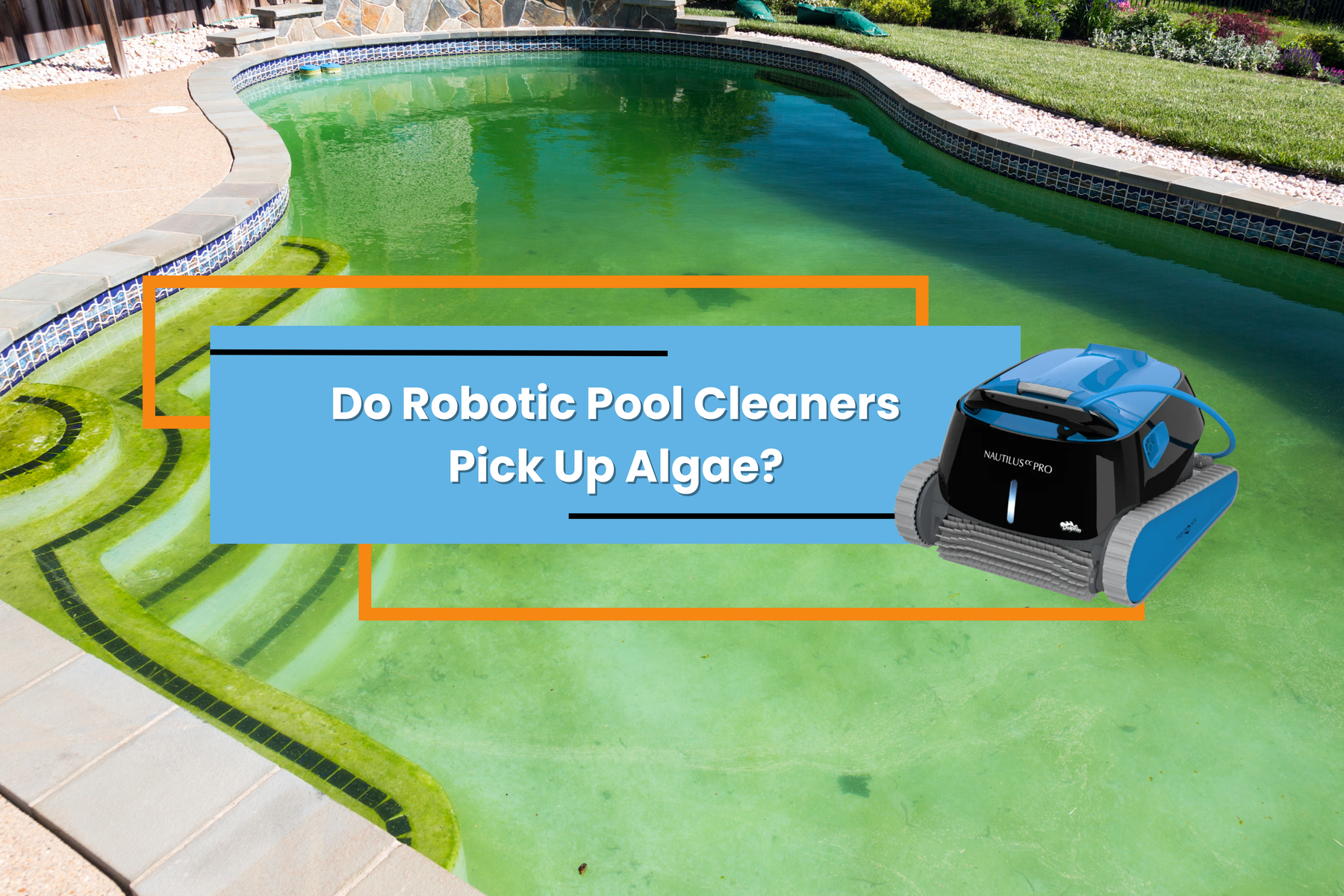
Do Robotic Pool Cleaners Pick Up Algae?
The Role of Robotic Pool Cleaners in Algae Removal
Short answer: Yes - but it depends on the type of algae and your cleaner’s filter.
Think of robotic pool cleaners as your pool’s personal vacuum-slash-ninja: they scrub, suck, and shine. But are they algae assassins too? Keep reading to find out if your bot is up for the green fight!
Algae isn’t just gross to look at. It can make your pool slippery, clog up your filter, and even stain the walls. That’s why so many pool owners are turning to robotic pool cleaners for help.
While they’re not magic machines, many robotic cleaners today are built to deal with the mess algae leaves behind. Especially the dead stuff that floats around after you’ve treated your pool.
How Robotic Pool Cleaners Tackle Algae
Robotic pool cleaners do more than just drive around the pool floor. The best ones come packed with strong filters, active brushes, and smart navigation.
They’re designed to clean every corner they can reach. Some even climb walls and scrub the waterline.
But how exactly do they help when algae gets involved?
Precision Filtration Systems
A big part of algae control comes down to the filter.
Robotic pool cleaners with fine filters - we’re talking 2 to 5 microns - can catch those tiny algae particles after treatment. That includes green algae spores that are often floating in the water or lightly sticking to surfaces.
For example, the Dolphin Nautilus CC Pro Robotic Pool Vacuum Cleaner has a fine filter system perfect for trapping small debris like dead algae.
Some models even use multi-layer filtering, which separates big stuff like leaves from the fine particles. That keeps your water looking clear and saves your filter from clogging too fast.
Dynamic Brushing Action
Here’s where the robot gets hands-on. Or rather, brush-on.
Algae loves to stick to rough surfaces. Robotic pool cleaners use spinning brushes to scrub pool floors and walls while they move. This scrubbing helps loosen algae so it can be sucked up and trapped in the filter.
Some models, like the AutoPilot AquaClean Robotic Cleaner, are built with strong brushes that work well on slick or stubborn spots. If you’ve got patches of green film, a good robotic cleaner will make a big difference - especially if you brush manually before running it.
Comprehensive Navigational Systems
Back in the day, pool cleaners would miss spots or get stuck in corners. Not anymore.
Many robotic cleaners today use smart sensors and mapping systems to cover your entire pool. They plan their route, avoid obstacles, and return to where they left off if they need to pause.
This means no shady spot is left untouched. If algae is hiding in a quiet corner, the robot will likely find it.
Models like the Dolphin Nautilus CC Pro are great at navigating pools of all shapes, making sure every area gets cleaned. It’s not just random movement - it’s smart cleaning.
When Robotic Cleaners Are Most Effective Against Algae
To be clear, robotic cleaners don’t kill algae on their own.
They work best after you’ve treated the pool with shock or algaecide. They’re also great at regular maintenance to keep algae from coming back.
Let’s look at the two main times they really help.
Preventing Algae Proliferation
Prevention is easier than cure. Running your robotic pool cleaner several times a week helps keep surfaces clean and stops algae from getting a foothold.
Algae needs still water and organic debris to grow. Robotic cleaners keep the water moving and the surfaces clean. That makes it a lot harder for algae to thrive.
It’s like vacuuming your house before the dust piles up. Stay ahead of the mess and it won’t have a chance to take over.
Removing Dead Algae After Treatment
Once you shock the pool and the algae dies, it doesn’t just vanish.
The dead cells sink to the bottom or float around. That’s where robotic cleaners shine. They can sweep up all the fine dead algae that would otherwise clog your filter or make your pool cloudy.
Just brush the affected areas, let the treatment work, and then send in your cleaner. A model like the AutoPilot AquaClean with strong suction and fine filters can handle this cleanup without breaking a sweat.
Final Thoughts
Robotic pool cleaners aren’t a complete replacement for algae treatment. But they’re a great tool for keeping your pool clean before, during, and after algae shows up.
If you’ve got a solid model with fine filters, strong brushes, and smart navigation, you’ll spend a lot less time scrubbing and scooping. And a lot more time swimming.
For algae control, consistency is key - and a robotic cleaner makes that part easy.
Related reading:
- Do Robotic Pool Cleaners Use a Lot of Electricity?
-
How Do Robotic Pool Cleaners Work? The Smart Way to a Sparkling Pool
-
Are Robotic Pool Cleaners Worth It? A Smart Buy or Splashy Hype?
-
Are Robotic Pool Cleaners Safe?
-
How Long Do Robotic Pool Cleaners Last? Robotic Pool Cleaner Longevity: What to Expect




Leave a comment